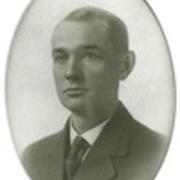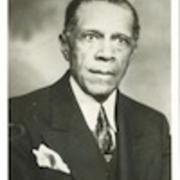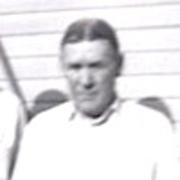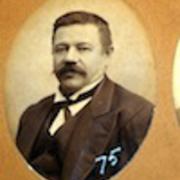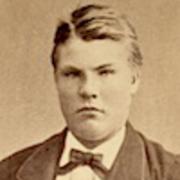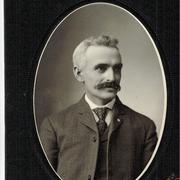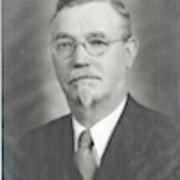
Form for Solicitation of Design Concepts/Ideas - State Capitol Building Workers’ Commemorative Plaque
Form for Solicitation of Design Concepts/Ideas - State Capitol Building Workers’ Commemorative Plaque
(See attachment with form and the background and entry requirement at bottom of page)
Name of Student:
Name(s) of Parent(s):
Home Address:
City:
State: MN
ZIP code:
Teacher:
School Name:
School Location:
Capitol Area Architectural and Planning Board
204 Administration Building 50 Sherburne Avenue
Saint Paul, Minnesota 55155 Phone: 651.757.1500
Fax: 651.296.6718 TTY: 800.627.3529
October, 2016
To: Minnesota Sixth Grade Students
From: Paul Mandell, Executive Secretary
Capitol Area Architectural and Planning Board
RE: Solicitation for Design Concepts/Ideas
Commemorative Plaque to Workers from Minnesota State Capitol Building Construction and Restoration
The Capitol Area Architectural and Planning Board (CAAPB), is pleased to announce a design competition for a plaque dedicated to those who helped build the Minnesota State Capitol Building.
The original 1905 Capitol Building, acknowledged by many as one of the five most beautiful state capitols in the nation, involved hundreds in the original construction (1898-1905), during which time six died in tragic accidents. Since then, many more worked on subsequent renovations as well as the current restoration effort (2009-2017), where over eight hundred individuals from a wide variety of trades in design,construction and project management were involved.
The legislation for the commemorative plaque, inspired by the testimony of sixth-grade students from Willow Creek Intermediate School in Owatonna under the guidance of Je1mifer Hansen, requires that the plaque make a special acknowledgement of the six workers who died in the original construction, stories of whom can be found in the attached testimony; while recognizing the work of all the others who made our State Capitol Building so very special.
According to the legislation, "the Capitol Area Architectural and Planning Board shall conduct an opportunity contest for sixth graders from across the state to submit designs for the memorial plaque or marker . The Board shall then select a design from the submissions to be used as a basis for production of this plaque or marker by January 1, 2017. The plaque or marker shall be placed "in a space easily visible to public visitors , .and installed during the State Capitol remodel. " (MN Laws of 2016, Chpt. 189, Art. 13, Sec. 61).
PLAQUE DESIGN REQUIREMENTS
The plaque is expected to be cast bronze. The plaque, per the legislation, must in a special way acknowledge the six who died on the original project, while recognizing all those construction workers who have been involved in the building since the initial groundbreaking in 1896. The text's legibility, as well as any artwork, shall be the most important consideration in design of the plaque. Any artwork should enhance the message but not interfere with the legibility of message. The plaque may be up to 4 1/2 feet in width by 3 1/2 feet in height.
SELECTION PROCESS
The CAAPB will name a jury panel to select the winning design from the submissions, and this panel will include one of the Board's Architectural Advisors, a member of the CAAPB Board, a representative of both the Administration Department and the Minnesota Historical Society, a graphic artist, a member of the legislature and one member of the public (possibly one of the original students whose testimony inspired this legislation). Once a design is selected, it will be turned over to a professional fan1iliar with the demands of casting and legibility for the necessary refinement and final design work.
The student with the winning design and his or her family will be invited to the Capitol for the unveiling of the plaque in the fall of 2017 and will be recognized at that ceremony, and will receive a personal tour.
STUDENT SUBMISSION
Submissions should be submitted as clearly lettered 8 1/2" by 11" piece of paper, preferably in a flat format for presentation and judging purposes. Include a piece of cardboard or stiff paper to assure that your design arrives without being damaged. Use the attached form for students' name, parent(s) name, home address, teacher, school and school address.
If you have any questions, please feel free to contact me at paul.mandell@state.mn.us or call 651-757-1507.
The deadline has been extended. We look forward to receiving your submissions on or before December 8, 2016, at the CAAPB office:
Capitol Area Architectural and Planning Board 204 Administration Building
50 Sherburne Avenue
Saint Paul, MN 55155
attachment
Testimony before the State Capitol Restoration Committee Hearing March 17th, 2016
Chloe Beede: On July 27, 1898, marching bands led thousands of people to the highest point in downtown St. Paul, Minnesota. Hundreds of veterans, stonecutters and other workers marched to the ribbon-draped speakers' stand. Here, the new capitol was rising from the ground. Onlookers leaned over the partially finished first floor walls.
TadJohnson: AmongthemanydignitarieswasMinnesota'sfirstterritorialgovernor,Alexander Ramsey, to officially lay the cornerstone for the people's house - the grandest building in the state and one of the finest statehouse buildings in the country.
Gabe Adams: The cornerstone was five feet long with a hollow core to hold a copper box. Into the box were placed more than 45 books, newspapers, photos and documents - including histories of legislators and soldiers since the founding of the stat e. The names of the Capitol Commissioners and architect Cass Gilbert, as well as his associates, were etched on a bronze plate.
Dominic Woodside Nelson: But the box contained not a single name of a worker or contractor who erected this structure. Since construction began in 1896, hundreds of workers were drawn to this spot - they dug and laid the foundation and built the lower walls. Hundreds more came to work there through the building's completion in 1907.
Katie Ihrke: These people all came together to create this Minnesota treasure, but they have remained nameless...it is time to right this wrong. These workers have waited 119 years to be recognized for their contributions to our state.
Lauren Bateman: Last year in Mrs. Hansen’s Minnesota Studies Class we helped to organize a letter writing campaign and obtained more than 700 signatures on a petition in hopes to secure a memorial for these men and women. We sent letters to Minnesota Lawmakers to appropriate funds to erect a memorial or plaque in the Minnesota State Capitol recognizing the efforts of these people. Especially those that lost their lives during the construction.
Chloe Beede: I am here to represent Felix Arthur. Felix Arthur, was the first worker to lose his life while building the state capitol. He came north with the controversial white Georgia marble. On May 5th, 1898 Felix was working on a stone polishing machine when he got caught inthe flywheel anddied thenextdayatSaintJoseph'sHospitalinSt.Paul.
Tad Johnson: I am heretorepresent John Biersack. JohnBiersack,a36 year old son of Bavarian immigrants, died in October 1898, a few days after he fell from a derrick.
Gabe Adams: I am here to represent Florian Zauner. On August 3, 1900, Florian Zauner, a 40 year old German-born laborer fell to his death while wheeli ng brick on scaffolding to be used in the pediment over Truss #1, on the House of Representatives, Florian fell to the ground and was killed. The wheel-barrow ran off the scaffoldi ng, and in trying to keep it from falling he lost his balance and fell to his death.
DominicWoodsideNelson: IamheretorepresentAlfredMagnuson.AlfredMagnuson,a23yearold Swedish stone mason, also fell to his death in 1900. Magnuson became the fourth death on the job when hefell while setting rooftrussesovertheSenatechamber.
Katie Ihrke: I am here to represent Albert Swanson. Albert Swanson, a 20 year old mold caster from Sweden, was killed in a strange accident. A passing wagon drove over a rope used to hoist material and scaffolding, on which men stood. The rope pulled the scaffolding down with Albert Swanson and Frank Thiery and both plunged 40 feet. Swanson collided with timbers and died. Thiery landed in a pile of sand and miraculously got away with only a broken leg.
LaurenBateman: I amheretorepresentJohnCorrigan. OnJune25th,1903JohnCorrigan,an18year old laborer fell 32 feet near the Senate chamber. The young man, was just a week or two on the job atthestatecapitolwhen hefelltohisdeath. Johnwasthelastfatalaccidenttooccuratthestate capitol building site.
Mrs. Hansen: I am here to represent the Owatonna graduating class of 2021 and their efforts to memorial the men and women who built our state capitol. These students saw the beauty in a structure that was built to stand the test of time. They recognized the skill of the craftsmen, masons, and sculptures. In a day and age where young people look at the new and shiny they saw the beauty in the old and marvelous. They recognized the work of men and women from a 119 years ago and wanted to recognize their contribution to the great state of Minnesota. We hope that you will support this bill and help us to recognize those that are long gone but to whom we will forever be grateful.
